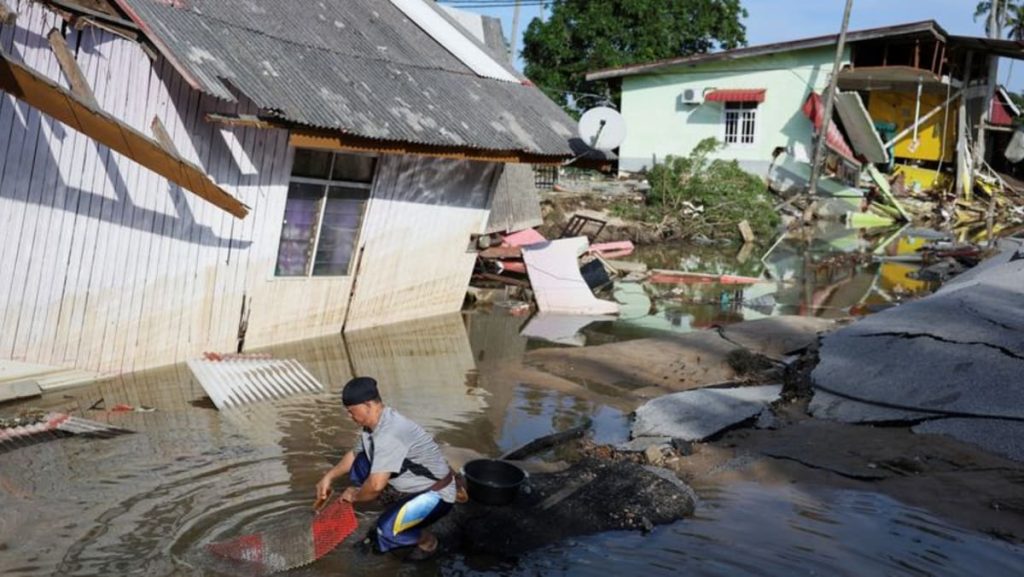Residents of Tumpat, a town in the state of Kelantan, Malaysia, are beginning to assess the damage as floodwaters recede after an unprecedented deluge. Over a span of a few days, the region received more than a meter of rain, leading to severe flooding that has forced families to abandon their submerged homes and businesses. The crisis has not only devastated individual livelihoods but has also had extensive impacts on infrastructure throughout Peninsular Malaysia, particularly its northeastern areas and parts of southern Thailand, where torrential downpours have wreaked havoc.
The magnitude of rainfall that afflicted the area was astonishing, with Malaysian Prime Minister Anwar Ibrahim highlighting that some regions experienced rainfall amounts representing more than six months’ worth within just a few days, specifically between November 26 and November 30. The towns of Tumpat and Tanah Merah recorded rainfall of about 1,167mm, while Besut in Terengganu state experienced a staggering 1,761mm. Prime Minister Anwar’s assertions in parliament emphasized the surging intensity of rainfall that surpassed all anticipations, calling attention to the extraordinary situation at hand.
The flooding led to tragic consequences, including the loss of dozens of lives and widespread destruction. Thousands of acres of rice crops have also sustained significant damage, jeopardizing agricultural outputs in the area. The local economy is facing critical challenges ahead as farmers and merchants scramble to recover from a disaster that threatens their livelihoods. With additional rain forecasted, fears of a secondary wave of flooding loom large, creating an atmosphere of uncertainty and trepidation among the recovery efforts.
As the floodwaters recede, Tumpat residents are cautiously returning to their homes, only to discover extensive ruin in many cases. Reports from the community indicate that homes have been ravaged, with collapsed walls and roofs scattered throughout the debris-strewn landscape. Residents confront the aftermath of the disaster, finding their possessions submerged and the remains of their once cozy interiors now unrecognizable in the pools of debris-laden water. Rebuilding their lives will require both practical and emotional resilience in the face of overwhelming losses.
Local authorities are on high alert as they monitor weather forecasts and prepare for the potential dangers of further flooding. The training and resources for emergency response teams are being tested extensively, as the unprecedented nature of these recent rainfalls challenges disaster response protocols. Ensuring the safety of those returning to their homes remains a priority, as officials work tirelessly to assess the structural integrity of buildings and provide assistance to those in desperate need as they attempt to clean and recover their properties.
In summary, the calamity in Tumpat illustrates the devastating impacts of climate phenomena on vulnerable communities. The unprecedented weather events serve as a stark reminder of the challenges posed by climate change and the necessity for robust disaster preparedness and response strategies. As Malaysian authorities and community members come together to rebuild from the wreckage, the resilience of the human spirit will be tested, signaling a renewed focus on long-term solutions for mitigating future environmental disasters.









